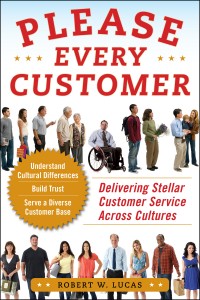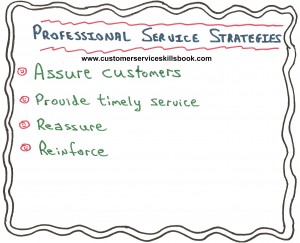Importance of a Positive Attitude in a Service Culture
Ever thought about the word attitude? Some say that attitude is everything. If yours is positive, then you likely succeed and are happy. If it is negative, chances are you find yourself feeling depressed and constantly dealing with stressful situations or confrontations with others.
Look at it this way, a positive attitude can allow you to give 100% in your daily efforts. Don’t believe it? The American English alphabet has twenty-six letters in it. Go through the alphabet and identify the numeric placement for each letter in the alphabet, then add those numbers together to see what you get. I’ll make it easy for you: A = 1; T = 20; T = 20; I = 9; T = 20; U = 21; D = 4; E =5. Total = 100!
Everyone has a “bad” day now and then at work. With all the pressures of the economy, family, health and other things that can surface in your life, it is no wonder that you would sometimes rather stay in bed and pull the covers over your head rather than go to work. Unfortunately, most people are not independently wealthy or in a position to do that.
Once you get to work, it is important that you try to put personal or other issues that might be negatively impacting you aside and give 100% effort to your job, employer and customers. After all, those are the elements that allow you to get paid and have opportunities in life.
The bottom line is that your customers deserve nothing less than a 100% positive attitude from you and others in your organization. By creating a customer-centric environment in which you and your peers focus on identifying and satisfying customer needs, wants and expectations, the chance of everyone succeeding increases. Additionally, providing the best customer service possible can lead to increased brand loyalty from your customers.
Learn About Robert C. Lucas – author of the Importance of a Positive Attitude in a Service Culture blog article
Bob Lucas has been a trainer, presenter, customer service expert, and adult educator for over four decades. He has written hundreds of articles on training, writing, self-publishing, and workplace learning skills and issues. He is also an award-winning author who has written thirty-seven books on topics such as, writing, relationships, customer service, brain-based learning, and creative training strategies, interpersonal communication, diversity, and supervisory skills. Additionally, he has contributed articles, chapters, and activities to eighteen compilation books. Bob retired from the U.S. Marine Corps in 1991 after twenty-two years of active and reserve service.
Make Money Writing Books: Proven Profit Making Strategies for Authors by Robert W. Lucas at Amazon.com.
The key to successfully making money as an author and/or self-publisher is to brand yourself and your company and to make yourself and your book(s) a household name. Part of this is face-to-face interaction with people at trade shows, library events, book readings, book store signings, blogging or guest blogging on a topic related to their book(s). Another strategy involves writing articles and other materials that show up online and are found when people search for a given topic related to a topic about which the author has written.
If you need help building an author platform, branding yourself and your book(s) or generating recognition for what you do, Make Money Writing Books will help. Bob’s popular book addresses a multitude of ideas and strategies that you can use to help sell more books and create residual and passive income streams. The tips outlined in the book are focused to help authors but apply to virtually any professional trying to increase personal and product recognition and visibility.
In my book Customer Service Skills for Success, I define customer service as “the ability of knowledgeable, capable, and enthusiastic employees to deliver products and services to their internal and external customers in a manner that satisfies identified and unidentified needs and ultimately results in positive word-of-mouth publicity and return business.”









